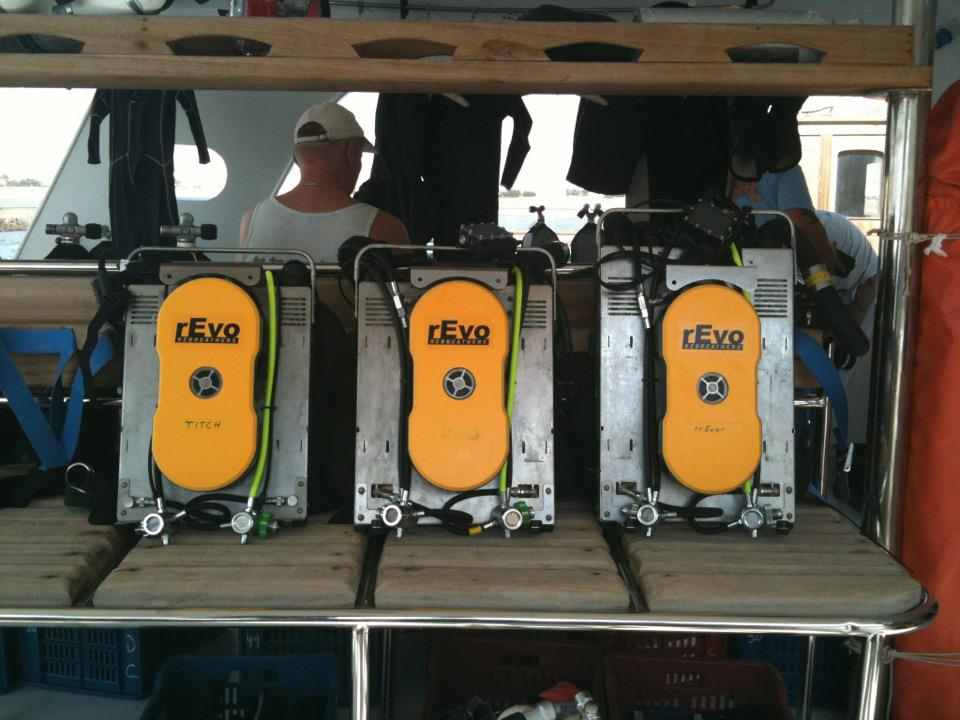Well this is a question that cannot easily be answered. When you look at rebreather incidents it is most likely that the user is major factor. When I review all of my lucky escapes it’s because I was lucky, nothing else, but how did I get into that situation? Most of the time is was from breaking my own rules. Never rush is the main one and I can put everything down to rushing and being rushed.
Now the user being the major factor has led rebreather manufacturers to attempt to engineer their products to save the diver from themselves. This has lead to some very complex engineering and electronic systems. Some rebreathers are said to be so advanced that the training is now diminishing because the “diver doesn’t need to know, the unit will bail them out if a fault occurs”. The problem with this approach is the more that you add to the unit, the more potential failure points that there are and when you have removed knowledge from the diver and the system fails then the diver suffers and quite often can pay the ultimate price.
If you study incidents it’s the diver of the Manual Closed Circuit Rebreather (MCCR) units that tend to have a safer unit and a better safety record but is this because they are diving a safer rebreather? If we take a closer look at MCCR to see why this is it becomes apparent. When the rebreather is manual the diver has to keep an careful eye on the O2 level. If the unit is set up correctly then there will be a constant flow of Oxygen (O2) set to match the users oxygen usage which we call “metabolic rate”. If the user starts working harder then they themselves know that they need to add some more O2 manually to maintain the correct Oxygen percentage (PPO2). This is also the case on ascent and the opposite on decent where the diver adds Diluent. The diver is thinking about what happens when changes are made and adjusting accordingly.
The diver of an Electronic Closed Circuit Rebreather (ECCR) unit can set everything on the rebreather pre dive and then just go ahead and dive. The unit will make the changes in PPO2 for them and all they have to worry about is maintaining buoyancy. All is good until there is a failure and then they need to act. Most units have alarms to warn the diver and hopefully the diver will be able to control the situation or switch to open circuit bail out before it’s too late.
When we’re diving a rEvo Hybrid Closed Circuit Rebreather (HCCR) we have advantages over both MCCR and ECCR. How I like to dive and how I teach the students to dive is to consider the unit as a MCCR with a parachute. We dive on a MCCR setpoint of say 1.3 PPO2 and an ECCR setpoint of 1.2 PPO2.
Consider this. We are diving on 1.3 and the O2 is flowing in through the Constant Mass Flow so that it’s matching our metabolic usage. Setpoint is maintained at 1.3, however another diver is having a problem so we go over to assist. Now our attention has been diverted from ourselves to another and we are not watching our setpoint perhaps as often as we should.
When we have 1.3 the HUD (head up display) will show a green light, if the set point drops because the work rate has increased or we have started to ascend then there will be a green light and an orange flashing light below it. Normally that’s all we need to alert us that setpoint is falling and we just give the manual add a short push. However in this instance we are not 100% looking after ourselves but aiding another diver so our attention is diverted. Should the setopint fall further. Once it has dropped to 1.2 the electronics take over and start to add O2 via the Solenoid. This is now working as an Electronic Closed Circuit Rebreather (ECCR).The mere sound of the solenoid is a punishment to me. It means that I’ve not been as attentive as I should have and I don’t like to hear it but often, however what I do know is that having electronics as back up is the way to go.
HCCR is a belt and braces approach. You can a opt to change it into either MCCR or ECCR. An example would be that you are in a far away place and you have a solenoid failure. Without a replacement you’ve wasted your money on your trip but when you have an HCCR you can just blank it off and dive MCCR. The holiday isn’t ruined. I’ve had this first hand but it wasn’t a solenoid failure it was someone tampering with my luggage trying to remove the Shearwater controller that would have ruined the trip on an ECCR unit.
If you have any questions about HCCR, ECCR or MCCR then please do not hesitate to get in touch
About the author
Simon is a highly experienced technical diver and rebreather instructor, teaching everything from entry level rebreather diving to 100m mixed gas CCR diving. He has been both diver and owner of many rebreather units including: AP Inspiration, AP Evolution, KISS, Sentinel, Megladon and he his now responsible for all UK rEvo Supply and Training having found what he considers to be the perfect rebreather in the rEvo. You can follow Simon on Facebook at http://www.facebook.com/RebreatherInstructor or on Twitter http://www.twitter.com/Tek_Deep

